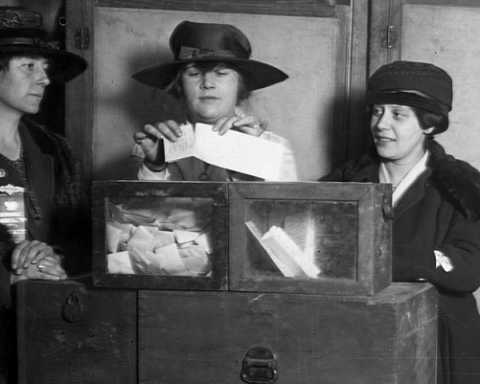Significant gender pay gaps persist more than 55 years after the passage of the Equal Pay Act of 1963 and the Civil Rights Act of 1964, and these pay gaps are even more stark for women of color and women with disabilities. Women in the United States who work full time, year round are paid only 82 cents for every dollar paid to men — and for women of color, Black women are typically paid 63 cents, Native American women 60 cents and Latina women 55 cents for every dollar paid to white, non-Hispanic men. Asian American and Pacific Islander women are paid just 87 cents for every dollar paid to white, non-Hispanic men.
These women of color have also been disproportionately affected by the pandemic and recession, exacerbating those existing pay gaps. Sectors dominated by women, including hospitality, childcare, retail, and the restaurant industry have been hit the hardest by the recession, resulting in higher unemployment rates for Black and Latina women. In addition, the coronavirus pandemic has shut down schools and many child care facilities, making it extremely difficult for working women to continue working and taking care of their families. About 1.8 million women, disproportionately women of color, have dropped out of the workforce in the last year, resulting in women’s labor force participation reaching its lowest level in more than 30 years.
Even before the pandemic hit, women faced occupational segregation, discrimination in hiring, and workplace harassment. Despite overall increases in participation rates for women in higher-paid occupations, women continue to face deeply entrenched barriers to accessing higher-paying jobs in nontraditional occupations and at managerial levels. Although women make up just under half of the workforce in the United States, they represent nearly two-thirds (64 percent) of the workforce in the 40 lowest-paying jobs. Employers typically pay people who hold these jobs less than $12 per hour.
Research shows that even when we control for factors such as education, occupation, industry, and work experience, significant gaps in earnings remain by gender, race, and ethnicity that cannot be explained. Women often do not know if they are being paid less than their male counterparts because of the secrecy culture around pay. This is why OFCCP has made ensuring pay equity a priority. Through its compliance evaluations and enforcement actions, OFCCP can unearth potential pay discrimination. Since 2019, OFCCP has obtained over $29,154,683 in monetary relief on behalf of women who have experienced pay discrimination. As a result of its enforcement actions, OFCCP has resolved significant pay discrimination cases:
- On February 1, 2021, OFCCP announced a conciliation agreement with Google requiring the company to pay $3,835,032 to resolve pay disparities affecting 2,565 female employees in software engineering positions.
- On November 12, 2020, OFCCP announced JP Morgan Chase would pay at least $9.8 million – which includes $800,000 in back pay and interest to 67 eligible litigation class members, and a minimum of $9 million in pay equity adjustments for female and minority employees across the JP Morgan Chase U.S. workforce over the next five years.
- On October 26, 2020, OFCCP entered into conciliation agreements with Hewlett Packard Inc. (HPI) and Hewlett Packard Enterprise (HPE) to resolve allegations of systemic pay discrimination against 391 female employees in several states. HPI and HPE agreed to pay $1,450,000 in back pay and interest to settle the allegations.
As the country rebuilds, OFCCP’s mission will be more important than ever to ensure women are treated with equity in employment and compensation decisions. Eliminating pay inequality would reduce the number of working poor, improve many families’ financial security, and strengthen the nation’s economy.
As we close out Women’s History Month, OFCCP honors and celebrates the contributions women make both in and out of the workplace and looks forward to working with employers to renew their efforts to ensure pay equity. Our economy depends heavily on the full talents of our workforce. According to the Census Bureau, it will take until 2059 for women to achieve equal pay if we continue at the current rate. Let us work together to ensure we do not have to wait almost four decades to close the gender pay gap.
Learn more about the rights OFCCP protects and other resources that support women in the workplace:
- Know Your Rights-Sex Discrimination Pamphlet: OFCCP provides frequently asked questions for workers on their rights and how to identify sex discrimination in the workplace.
- Parental Leave FAQs: OFCCP provides resources on worker’s parental leave policy and their rights in requesting leave.
- Resources for Expecting Mothers: It is essential to know your rights as an expectant mother, therefore OFCCP and the DOL’s Women’s Bureau provide resources on employment protections for pregnant women.
- Grant Programs with the department’s Women’s Bureau: The Women’s Bureau offers grant opportunities for women with their WANTO Grant and the Restore Opioids Grant.



